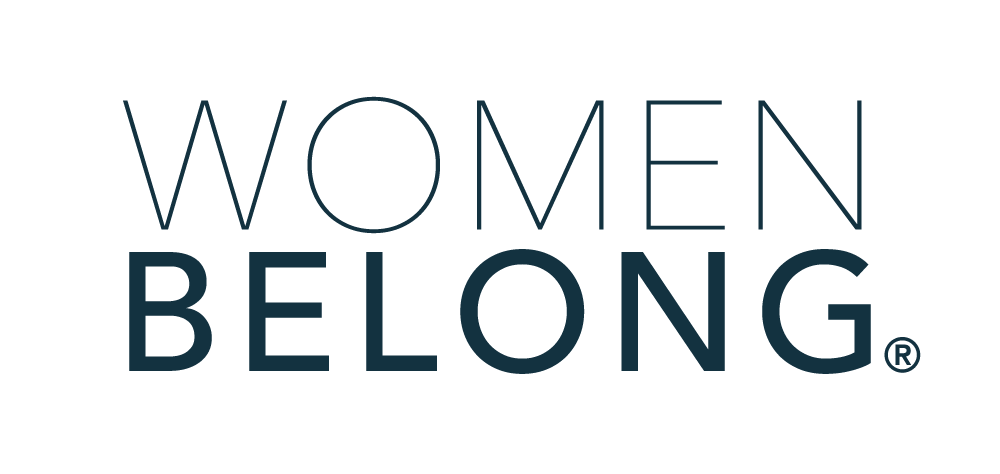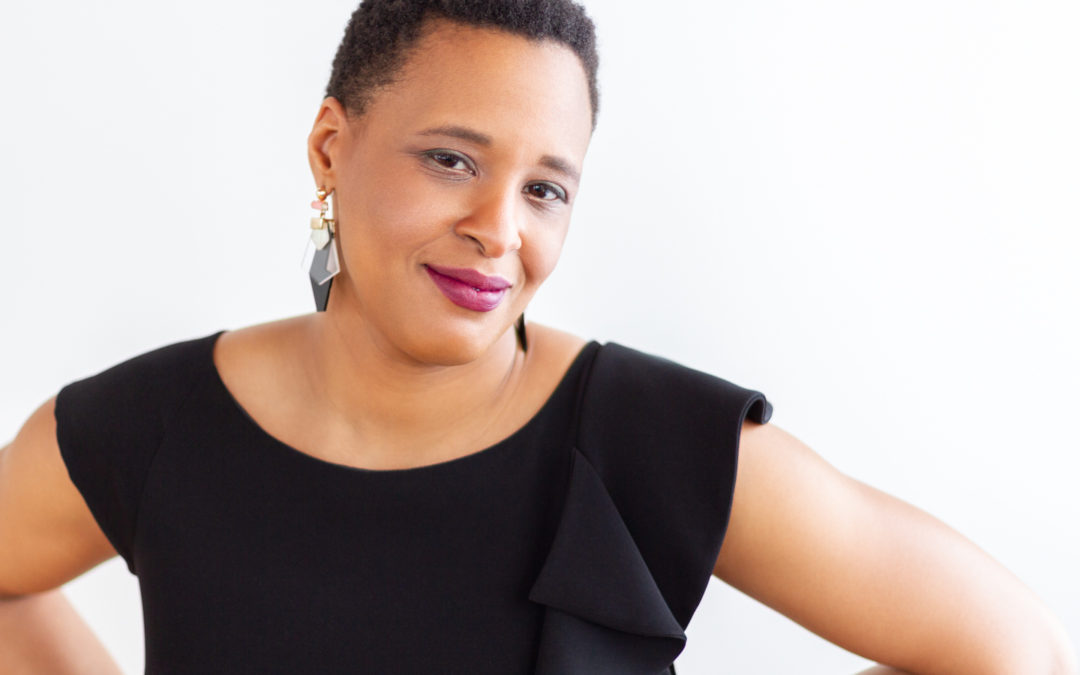I’m sharing something more personal for this spotlight. It is a personal essay on my experiences living in a current climate as a black woman living in a white world. I hope this look inside my personal experience can help you reflect your own experience, how people experience you in your everyday life, and the importance of engaging with others in an inclusive way. It is longer than the typical spotlight post, but I hope that you’ll dive in anyway. Here it goes…
Each time I heard someone talk about the “New Normal” after the onset of the COVID-19 pandemic, I bristled. The idea of going back to normal didn’t sit right with me. As the pandemic went on, I could think of many things that would be different… thinking twice about what we touch, scavenging for hand sanitizer, and video conferencing for everything came to mind right away.
But I also fully expected so much of my existence to go back being the same…being invisible to people in my mostly white neighborhood, having to fight to be heard only to be dismissed as angry afterward, having my tears and pain disregarded by those around me, and so many other typical experiences of a black woman in a white world. As I isolated with these thoughts, I read about the murder of Ahmad Arbery… then, began hearing the stories about Breonna Taylor…that ridiculous woman in Central Park…then George Floyd.
For me, none of these stories were new. These were the stories of black people since the beginning of this country. I couldn’t watch the videos and subject myself to the trauma of seeing the execution of people who looked like me knowing how easily that could be me or any one of my loved ones.
But still each story stung, especially with the backdrop of COVID-19 killing people who look like me at an obscene rate. Before the statistics began making headlines, logic told me what was happening. So many of us are those essential workers on whose backs, American society functions on. So often, we are the ones behind the scenes remaining thankless. Our postal workers… public transit drivers… security personnel… sanitation professionals… store attendants, and more. On top of that, the underfunded medical and social services in black neighborhoods in spite of the billions allocated to law enforcement meant to keep black folks in their place came to mind. Not to mention the toll that living with constant racial trauma takes on a person’s health.
When the Illinois shelter in place order first came down, I noticed my neighbors taking extreme caution. Most of them stayed indoors and practically every time I passed someone on my walks to the grocery store, they wore a mask and mutually struggled to navigate the sidewalk, grass, and street to give each other a wide berth.
When the disparate impact of coronavirus on black and brown communities hit the news, I predicted that the way the pandemic was handled by leaders and our communities would soon change. Almost overnight, I saw my neighbors’ “solidarity” and social distancing precautions wane. It began with more people outside taking walks. Within a week, folks were walking past each other on the sidewalk pre-pandemic style with no attempt to create 6 feet of distance. Fewer and fewer people wore masks outside of their homes. Eventually, it became common for me to be the only person wearing a mask, as I walked through my neighborhood to the store. As I exited the store, I would watch as people ripped off their masks the second that they exited the glass doors of the store building where mask wearing was required by law. My neighbors hosted gatherings on the sidewalks and in our common yard spaces. It was clear how safe they felt to skirt the social distancing guidelines.
All of these things confirmed that bristling feeling I had about this faux “New Normal,” I just knew that things would go back to the same as soon as folks could find a way to justify it. I could see the people around me doing everything in their power to make that happen. The realization dug in deeper every time I heard a well-meaning person say, “I can’t wait for things to get back to normal” as they struggled to adjust to their new realization that their notions of control and freedom may not be quite what they thought.
As I hid in the safety of my skepticism, I began to notice something that challenged my position…the typical return to silence, after a black person is murdered at the hands of police or some police-wannabe, wasn’t the same. I saw more and more people speaking up about the injustice behind these deaths. Many unexpected voices. People in the suburbs and around the world were protesting. Mainstream white America was finally starting to understand that the “Black Lives Matter” call is not an effort to diminish their value, but a cry for basic human treatment as people whose lives should matter.
While I found all of this new communal support for black folks intriguing, I remained skeptical. I’ve seen folks jump on all kinds of bandwagons before only to move on when the next trendy movement comes along (think, Occupy Wall Street, Abolish ICE, MeToo…). I get it, our society is inflicting so much pain on so many people; it’s hard to focus on all of them at the same time.
Knowing that made me afraid to get my hopes up. Afraid to trust that things may finally change. Afraid to trust that me, my child, my loved ones, and people who look like me may finally be seen and treated as humans.
I wrapped myself up in work and a new volunteer project. I buried myself in busy and “making a difference.” I didn’t allow myself one second to get wrapped up in another bout of pain, grief, and fear.
When the weekend came, my body craved rest. A short break allowed all of my thoughts and feelings to finally catch up to me. The details that I had picked up from folks checking in and social media made it impossible to resist witnessing these crimes for myself.
I dove in. I read the stories. I listened to the news. And, finally watched the video of George Floyd’s murder. I forced myself to hold on and watch beyond those horrible first, anticipatory seconds knowing a horrible execution was coming. I was immediately devastated. I cried. I shook. And, I screamed in pain. My grief and sorrow completely overtook me.
My skepticism began to melt as I waited outside my building for a volunteer to pick up items for my volunteer project. As I sat on the stairs outside of my building, I noticed an older white couple walking my direction down the sidewalk. I looked down as I prepared to look up and quickly away just before making eye contact to avoid the awkward pain of being ignored as is typical for me. Instead, something different happened as they got closer. They didn’t shift their attention to each other to avoid acknowledging my presence. Instead, they both kept looking in my direction. In my eyes. And, then I heard it. A sing-songy “Hello.” I froze for a second and pushed out a quiet “Hi.”
A few moments later, to my surprise it happened again! Another white person walking past said “Hi” as she walked down the sidewalk with her friend. And, a third time! This time, an older, bearded white guy walking by himself spoke to me and said “Hello.” I was stunned. I wondered to myself “How can everyone see me today? What happened to my protective cloak?”
My confusion inspired me to resort to my Phone-A-Friend lifeline. I had to tell someone about this! I texted my friend, Cassie, a white woman who lives nearby. Cassie’s ability to see me has always sparked awe for me. I hurriedly typed a message telling her about my newfound visibility.
As I typed, it happened again! Another couple. “Hello.”
I told Cassie how in that short ten minutes I had experienced more greetings from my maskless, white neighbors, than I had in the entire 4 years that I have lived in this building combined. She was happy for me and also sad to realize what my experience had been before that moment.
When I spotted the lady with three small children coming my way, I was sure that this new pattern could not continue. She couldn’t possibly find the time and energy to greet me and juggle three 5-year olds on scooters. I was wrong. Despite being distracted managing those littles, she still made sure to make eye contact and say “Hi.” I was thoroughly and utterly baffled. “It must be Opposite Day…,” I joked to myself.
Relief washed over me as the volunteer pulled up. I could finally go back inside to the safety of my apartment. Away from this weird new paradigm. I could be safe and comfy in my little corner of the world where I could go back to being unseen, unless I decided to poke my head out and demand acknowledgement. I was used to being ignored…invisible. It was comfortable. It was safe…
So many emotions came up upon being seen… confusion about how to respond, fear about responding incorrectly, slight gratitude for finally being acknowledged, discomfort and fear with being seen, excitement to tell my roommate and see her shocked reaction, sadness and grief for all the time my existence and humanity were ignored, shame for being so comfortable with being invisible, guilt for not doing more to be seen in the first place….all at once they rushed me.
It only took another week or two for things to go back to their normal silence with my neighbors. A few of them will try to at least make eye contact before continuing on their way. And, there’s the one neighbor lady who still speaks; though, she was one of the few pre-pandemic “Hellos”. And even she seems especially eager to say “Hello” these days.
To see my neighbors move back to their normal, their comfort, their supremacy is hard to watch. It means my own diminishment and devaluation. The diminishment and devaluation of my child, my family, my friends, my community. As I watch their efforts to regain normalcy from my apartment window suffering in silence, it is impossible to disconnect their normal from my and my loved ones’ suffering. I desperately want to scream “YOUR NORMAL IS KILLING ME!”
If you’re interested in continuing your own reflection, I have worked with Women Belong to provide opportunities for you to begin your journey. Check out my Seeds for Growth and the 3 exercises that I developed specifically for Women Belong. If you are interested in more in-depth learning for your organization, check out my website at https://www.inclusiveresolutions.com or email me at t.mack@inclusiveresolutions.com.
Content provided by Women Belong member Thyannda Mack













































 She Thrives - Soul Strategies for Women Who are Busy AF
She Thrives - Soul Strategies for Women Who are Busy AF Connections - ZOOM Networking Event
Connections - ZOOM Networking Event She Thrives - Soul Strategies for Women Who are Busy AF
She Thrives - Soul Strategies for Women Who are Busy AF Charting Your Course: The Energy of Gratitude and Ritual
Charting Your Course: The Energy of Gratitude and Ritual Women Belong Book Club
Women Belong Book Club